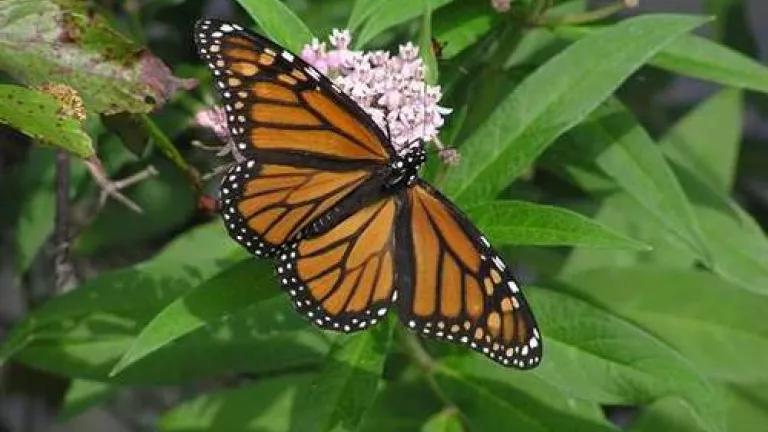
Every year researchers measure the size of the population of migrating monarch butterflies who have survived to spend the winter in Mexico. For more than a decade now the population size has been dropping steadily with last year the lowest count on record.
This year's count will likely be announced this week by the World Wildlife Fund and Mexican conservation authorities, and it is widely predicted that the numbers will show an increase from last year's disastrous figures. But hold the champagne--the population is still dangerously low.
Update: The numbers have now been announced and although slightly increased the population size is still the second lowest on record occupying 1.13 ha which loosely translates to 56.5 million butterflies. (In comparison, last year's population occupied 0.67 ha or 33.5 million butterflies.)
The crisis is far from over.
Monarch populations, which spend the winter in a small area in the mountains west of Mexico City after a months-long migration to Canada and back, have been in sharp decline for more than a decade. While climate change and deforestation in their Mexican refuge are also factors, scientists say the main reason is the destruction of milkweed, the only food their larvae will eat.
And that has largely been caused by the broad scale use of Roundup herbicide and other glyphosate chemicals on genetically modified corn and soybeans, which now dominate the Midwest. The herbicides kill every non-GM plant in the fields, including the milkweed, a native wildflower.
Experts are forecasting an increase in monarchs this year primarily based on favorable weather conditions last year. There are a number of factors than can affect the monarchs as they make their famed migration across the United States and into Canada before returning to Mexico, including unexpected freezes, rainstorms, and heat. Last year's conditions allowed more butterflies to migrate and reproduce along the way.
Even at the high end of the predictions, however, the population will still be far below the amount needed to protect against any disastrous events. For example, in 2002 a freak winter storm killed an estimated 275 million monarchs at one time - well above the current population size. Clearly many more monarchs are necessary to help buffer the population against such unforeseen calamities.
Right now, however, the monarchs are limited in their ability to increase their numbers because their main food source, milkweed, has largely been eliminated from large portions of their migratory pathway.
In order for the monarch population to rebound sufficiently, they need milkweed. And lots of it. That's why NRDC is working to increase the amount of milkweed out there through our Green Gift partnership with our friends at MonarchWatch. They promote milkweed plantings at schools and nonprofits across the country.
We are also working to gain federal and state restrictions on glyphosate around field edges and in other areas like along highways. We have petitioned the EPA to review glyphosate in light of its impact on monarch butterflies and have challenged the recent approval of a new pesticide, Enlist Duo, that would further contribute to the loss of milkweed--and monarchs.
If the forthcoming announcement shows an uptick in numbers, that's no reason to slow these and other efforts. The bottom line remains: to help monarchs we will need to address the broad-scale use of herbicides in agriculture as well as actively increase milkweed on the landscape.
Monarchs have the ability to bounce back in great numbers if given the right conditions--including plenty of milkweed. But we must remain aggressive in our efforts to rein in herbicides and plant more milkweed. Help us in helping the butterflies at LetMonarchsFly.org.

